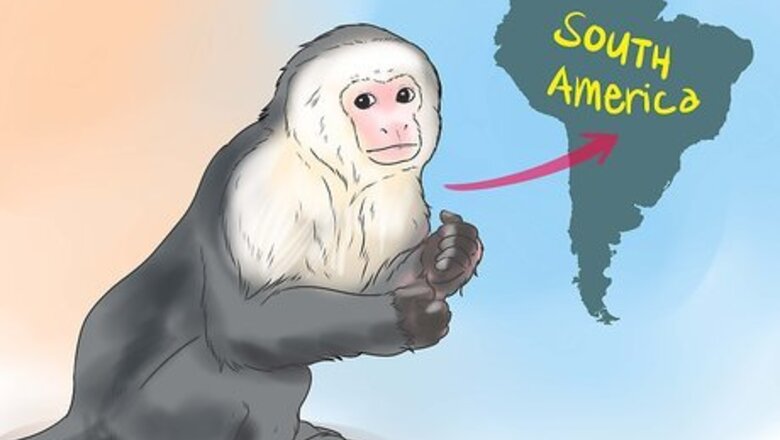
views
Understanding Capuchin Monkeys

Note their natural environment. Capuchin monkeys originate from the jungles of Central and South America, where the climate tends to be warm. They live the majority of their lives in treetops, descending to the ground only for water. Think about the environment you can provide, and how closely it mimics their natural environment.

Understand the lifespan of a Capuchin. Capuchins exhibit a 35-45 year lifespan in captivity. If you are adopting a Capuchin as a baby, be sure you can commit to caring for the monkey for the entirety of his lifespan. Your Capuchin can outlive you, so enact a care plan if that should occur.

Be clear on social behavior. Capuchin monkeys live in social groups of 10-30 other Capuchins. Within each social group is one dominant male, who acts as the leader. Social class exists within Capuchin monkeys and affects the everyday functioning of how the monkeys interact together. Class structure influences if monkeys will race to defend another or leave him be. Your Capuchin may become aggressive toward you or begin throwing feces. This may be a way he is testing social boundaries with you.

Observe sexual maturity. Capuchin monkeys reach sexual maturity by age 4 or 5. Full-grown Capuchin monkeys weigh between 4-15 pounds, with larger males than females. Female menstrual cycles occur every 14 to 20 days. With sexual maturity, behavior or personality changes may occur. Adolescents that were docile and cuddly may become aggressive.

Observe infant behavior. Mothers give birth to one baby, with a gestation of 160 days. The baby will cling to the mother for about three months, at which point he may start to explore the environment on his own. After about 3 months, babies will start to take solid food, and are typically weaned by about 1 year of age. If receiving a baby Capuchin, do as much as you can to imitate the mothering. Capuchin babies rely heavily on their mothers at the beginning of their lives, never leaving their side. Let them cling to you and observe their surroundings while close to you. If the monkey seems scared or apprehensive, cuddle it. Introduce objects (and people) slowly and show that you are ok with them.
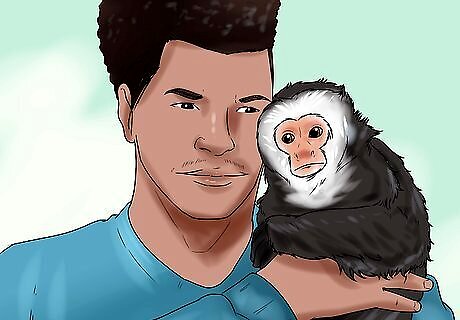
Prepare to spend a lot of time with your Capuchin. Especially if you have an infant, you will need to spend much time with your monkey, serving as her caretaker. Nothing can replace time and attention for your monkey, as Capuchins are highly social. Interact with your Capuchin, provide cuddles, and play with toys. Make all interactions highly enjoyable for your monkey. Stop immediately and redirect to another activity if your monkey is unhappy.
Preparing A Capuchin Home

Provide indoor and outdoor housing. The bigger the enclosure, the better. It is best to provide an entire bedroom plus an outdoor section. The indoor section should be heated. You want your monkey to stay interested in the environment and not get bored. Be sure to include some shade when building an outdoor section.

Be cautious with habitat openings. Monkeys are inherently curious. Don't let monkey boredom lead to a missing monkey. Be extra cautious to secure doors or any openings which your Capuchin can use to escape. It is not overkill to create a double-door structure.

Create a stimulating environment. Fill the habitat with items your monkey finds interesting. Include items such as branches, trees and bushes, platforms, swings, ponds, tires, ladders, unbreakable mirrors, baby toys, and dog toys. Use non-toxic plants and trees such as bamboo, rubber tree, willow, palm, or hibiscus. Avoid American oak, cedar, mistletoe, and pencil trees as these can poison your monkey.

Change the environment. To avoid boredom, change the layout of the enclosure. Add new items or move items around. Buy new toys or rotate toys to keep your monkey always interested and playing.
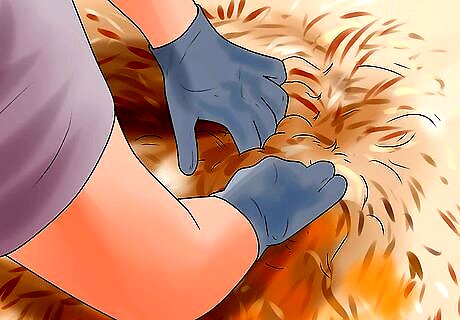
Choose an indoor floor. The floor should clean easily, such as a drop tray, peat, straw, or wood chips in smaller cages. Larger cages can have cement or linoleum floors.

Clean your monkey enclosure. Monkeys are known to throw their food, rip things up, and even fling their feces. They are not clean animals. Clean the monkey enclosure at least once each week.
Monkey-Proofing Your House

Consider using diapers. While they may look goofy, many monkey parents use diapers to eliminate large messes with bodily fluids. Some monkeys will throw feces if they are annoyed, bored, or upset, so using diapers can reduce these messes. Some monkey parents choose to use baby diapers (with a hole cut for the tail), while others use rags or other at-home methods. Be aware that older monkeys may start refusing to wear diapers or take them off and smear feces. There is no surefire way to eliminate messes.
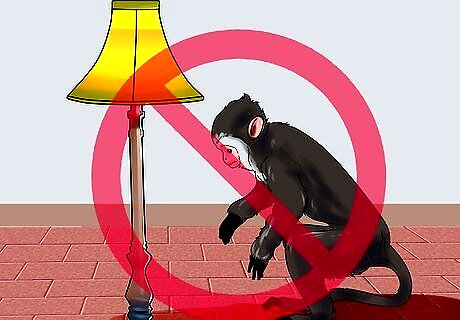
Secure acceptable areas. Many monkey parents allow the monkeys to run around their house, but make sure the house is completely secure first. Cover outlets and remove appliance cords. If your monkey contacts an electric current, it could kill your monkey. Look around and determine whether your monkey can damage any of your belongings. If so, remove them. Lock all doors that the monkey is not allowed to enter. While monkeys are often fascinated with lamps, they can be dangerous. Remove any standing lamps that can fall over. Monkeys like to place items on top of the bulbs, which can start a fire. Your monkey is capable of unscrewing lightbulbs.

Ensure the kitchen is completely off-limits. Your monkey can burn herself on the stove or injure herself with the knives. Lots of accidents can occur in the kitchen, and it's best to keep it off-limits.
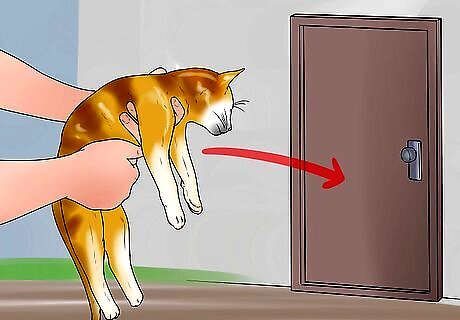
Remove all other pets. You don't want a confrontation, so move any dogs, cats, birds, or other pets while your monkey plays. Place them in a secured, locked room.
Feeding Your Capuchin a Balanced Diet

Provide a commercial food. Specialized monkey food exists, which you can purchase from a specialty store or online. These foods provide proper nutrition to your monkey. Both wet and dry food is available for purchase. Use as directed.
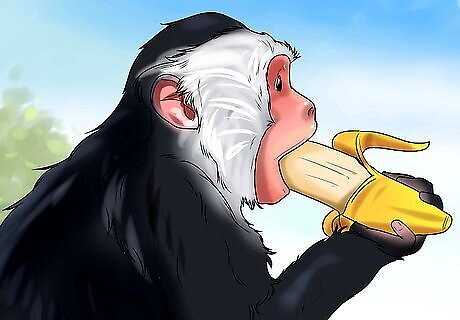
Supplement feed with fruits and vegetables. Monkeys need to eat additional food outside of feed, such as fruits, nuts, and vegetables. Add mangos, carrots, and sweet potatoes every day at night. All foods should be cut up so that it can fit into your monkey's hands. Do not overfeed. Monkeys will tend to throw food or create a mess when provided with too much food. Avoid feeding dairy, sweets, candies, or cereals as these are bad for Capuchins.
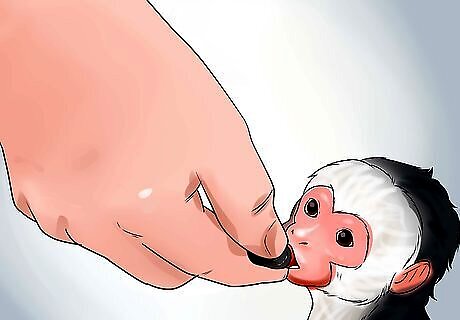
Provide occasional treats. Treats do not have to be given every day. Consider a treat like raisins. Do not feed in excess of 1 teaspoon.

Give fresh water every day. Monkeys will need fresh water throughout the day. Especially if your monkey splashes or creates a mess, you will need to refill the water several times each day.




















Comments
0 comment